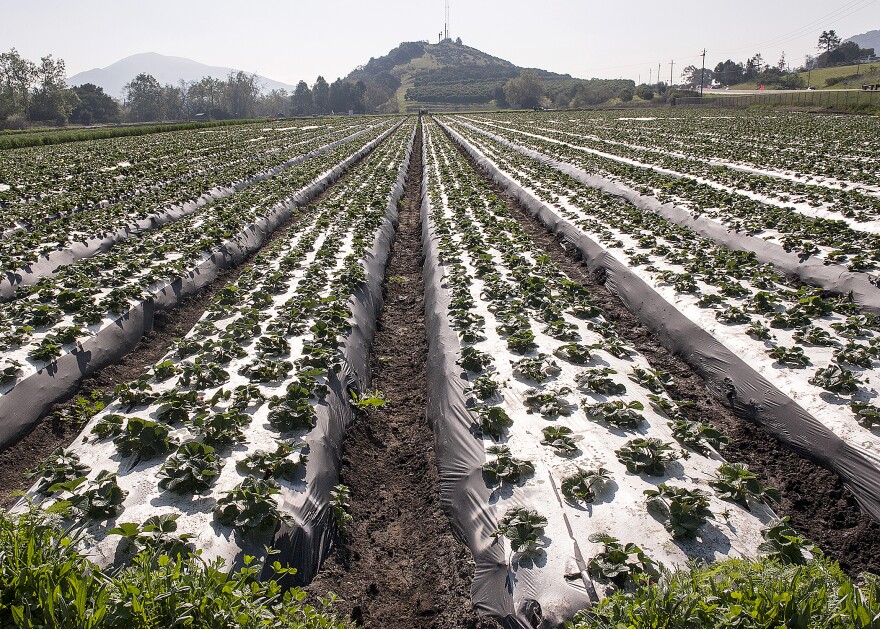The Central Coast's number one cash crop is taking a hit from an environmental watchdog group for what it calls an excessive use of pesticides.
The Environmental Working Group (EWG) released it's Dirty Dozen (see below) produce list this week, and strawberries had the highest levels of detectable pesticides residues.
It's the first time in the list's fifteen years of being published that strawberries took the top spot. They bump apples to second place, which had held the number one spot for five years running.
According to the group, 98 percent of strawberries tested by the USDA in 2014 had detectable pesticide residues.
Bill Walker is the group's Investigations Editor and said the chemicals for strawberries fall into two categories.
"It's not only the pesticides residue but the vast vast amount of fumigant gases which are used to prepare the soil for planting which can drift off from farm fields and into adjoining neighborhoods or schools," Walker said.
Walker also pointed out there is encouraging progress by Central Coast strawberry growers to move to organic methods.
Locally the Cal Poly Strawberry Center is working with the California Strawberry Commission to research ways to reduce chemical usage while still controlling pests.
Center director Gerald Holmes says researchers are looking into alternatives for methyl bromide, a fumigant which will no longer be used as of next year.
"One alternative is non chemical which is the use of cultivars or varieties of strawberries that are resistant to the root rot pathogens that methyl bromide was so important in controlling," Holmes said.
A spokesperson for the California Department of Pesticide Regulation said in an email to KCBX that DPR believes there is "nothing dirty" about California produce.
"We test for more than 300 pesticides," said Assistant Communications Director Charlotte Fadipe. "Our scientists have repeatedly found that much of the California produce in stores has no detectable pesticide residue or the residues are within the limits set by the federal government."
View DPR's 2014 Pesticide Residues in Fresh Produce report.
The California Strawberry Commission—the industry's promotional organization—released a statement on Tuesday blasting the Dirty Dozen rankings.
"On behalf of the conventional and organic farmers we represent, the California Strawberry Commission (CSC) reiterates that health experts everywhere agree that consumers should eat more fruits and vegetables, like strawberries, every day for better health and a longer life," the statement read. "Further, the science clearly shows that organic and conventional strawberries are safe to eat and pesticide residues do not pose a safety concern."
EWG suggests buying organic or pesticide-free versions of items on its Dirty Dozen list, when available.
EWG's Dirty Dozen List 2016:
- Strawberries
- Apples
- Nectarines
- Peaches
- Celery
- Grapes
- Cherries
- Spinach
- Tomatoes
- Sweet bell peppers
- Cherry tomatoes
- Cucumbers
See EWG's "Clean 15"
NOTE: This report was modified at 10:01 a.m. on April 13, 2016 to include responses from the California Department of Pesticide Regulation and the California Strawberry Commission.


